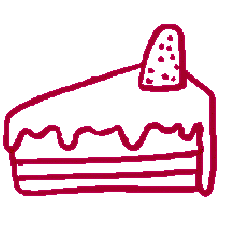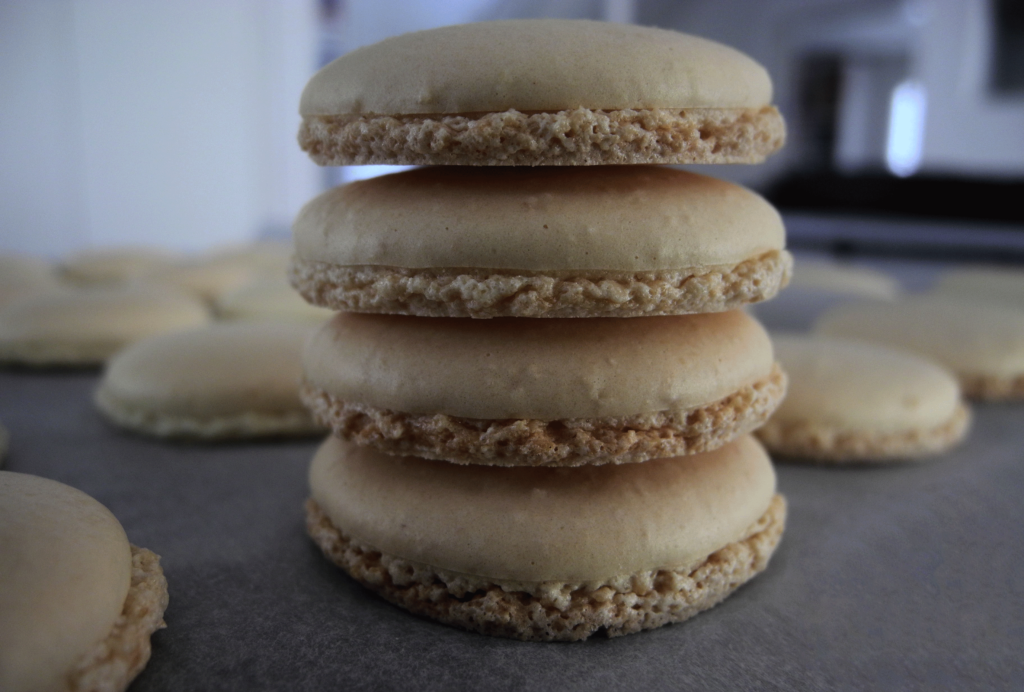Eight years ago, when I was 15 years old, I entered a macaron baking craze. This was curious; I did not (and still do not) particularly like macarons. I had heard they were some of the toughest little bites to master and they had never been attempted in my house before, so I suppose they became a symbol of me defining myself as a baker and distinguishing myself from the many Serbian baking generations. Macarons were the first (and only?) things I surpassed mom’s baking skills in, and remain a particular signature of mine.
Baking macarons is a joy. They are precise enough for a perfectionist like me, unpredictable enough to be exciting, and variable enough to remain exciting no matter how many variations you attempt.
The Pierre Herme ‘Macarons’ book guided me through my macaron craze, and many of the recipes I now swear by contain elements of Pierre Herme’s macarons. The Pierre Herme Italian Meringue Macaron Shell recipe remains the base of all my macaron endeavors.
Small aside: Macaron shells are made by either the Italian- or French-meringue method. The French meringue method involves beating powdered sugar into egg whites, while the Italian meringue method involves sugar syrup (and a candy thermometer). The Italian meringue method may therefore seem more effortful, but is my preferred method as it yields glossier shells, is more consistent, and is harder to over-beat.
(Makes 1.5 baking trays of shells)
Equipment
- Candy thermometer
- Piping bag
- Round piping tip (6mm diameter)
Ingredients
- 100g finely ground almonds (I usually buy the finest ground peeled almonds I can find and still sift them through a course sieve. This is not essential but results in smoother macarons)
- 100g powdered sugar
- 2 large egg whites (36g each. I weigh them but small variations will be ok)
- 100g granulated sugar
- 25g water
Method
- Sift the almonds and powdered sugar in a large bowl
- Add one egg white and set aside without mixing
- In a separate heatproof bowl, separate the other egg white and set aside
- Heat the granulated sugar and the water in a pan and fit with a candy thermometer
- When the sugar syrup reaches 110 degrees Celsius, begin beating the single egg white to soft peaks
- When the syrup reaches 118 degrees Celsius and the egg white reaches softer peaks, carefully pour the hot syrup into the egg white while continuing to beat at high speed
- After 1 minute reduce to medium speed and keep beating for around 8 minutes until the meringue cools to room temperature or lukewarm
- Simultaneously stir the almond egg white mixture to a thick paste. Add any extra desired colorings or powdered flavors here
- Fold the egg white mixture into the almond mixture 1/3 at a time
- Keep carefully folding the mixture until it is slightly glossy and ‘spreads like lava’. Knowing what this means can take a few attempts. You need to break the egg whites slightly: too little and the mixture will be too thick and hold air pockets, too much and the shells will spread, flatten, and lack the signature ‘foot’. The optimal window spans less than 10 folds.
- Transfer the mixture to a piping bag with 6mm round tip and pipe even circles of 3.5 cm diameter onto a baking pan lined with baking paper. The shells will spread out a little when piped but will not spread outwards in the oven
- Rap the edges of the pan down against the countertop a few times each. This eliminates some bigger air pockets and is especially handy if you have slightly under-folded the mixture
- Allow the piped shells to rest at room temperature for 40 to 60 minutes until they form a thin non-sticky coat when touched lightly. Do not skip this step as it helps the shells rise upwards rather than outwards in the oven and form the ‘foot’
- Heat the oven to 170 degrees Celsius fan setting
- Bake for 12 minutes. The shells should not change color in the oven, but should be baked such that the foot does not collapse when taken out of the oven
- Allow to cool before taking off the baking paper
Small aside #2: I was slightly disappointed when I first realized that even the top bought macarons do not put additional flavors into the shell, but wholly rely on the filling for the unique flavors. Food coloring is then used in the shell for appearance. Wet additions to the shell mixture disrupt its consistency and ruin the shell, but I try to incorporate dry flavorings whenever possible:

Variations
- Cocoa powder has both strong color and flavor, and can easily be added to the macaron shells for chocolate macarons
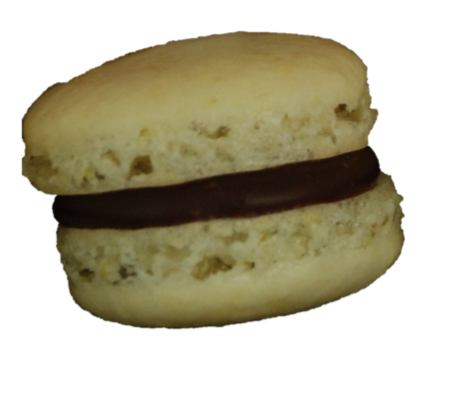
- Lemon zest in the shell adds that little bit of extra flavor to a macaron, though does little for color
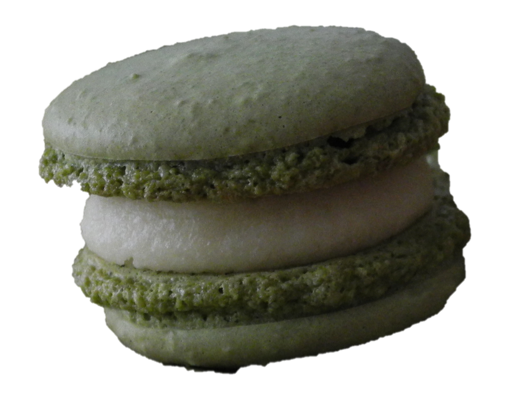
- Matcha, too, adds distinctive flavor and vibrant color
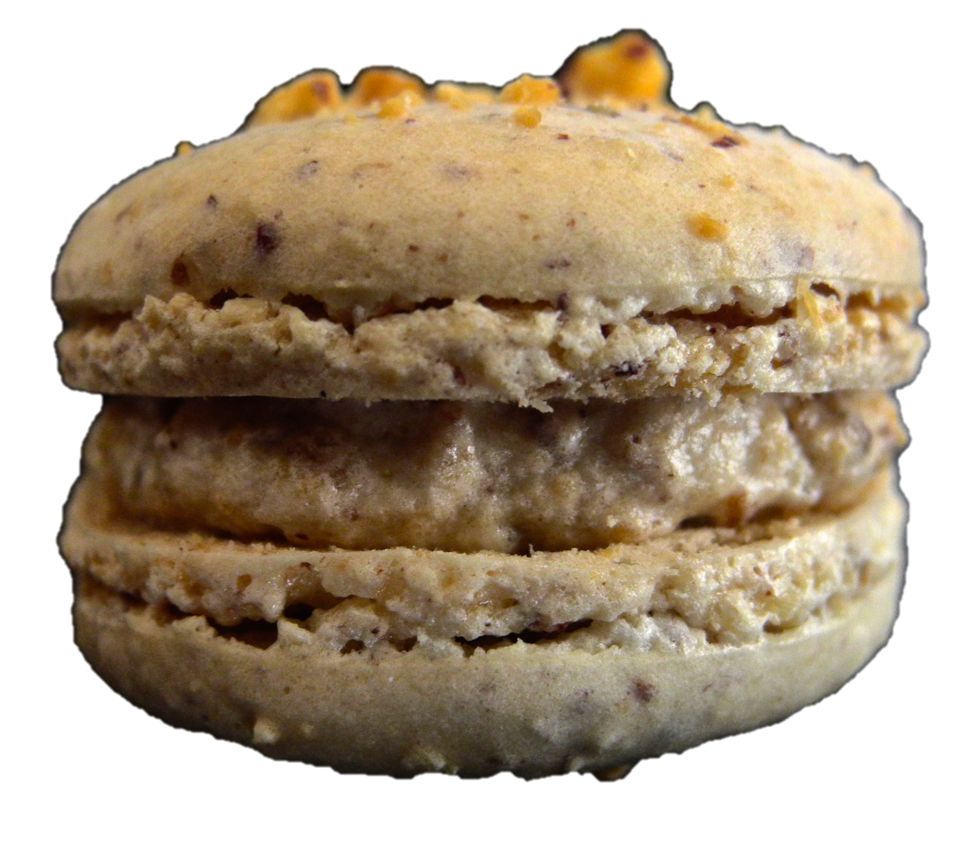
- Half the ground almonds in the shell recipe may be exchanged with ground hazelnuts for a hazelnut macaron shell
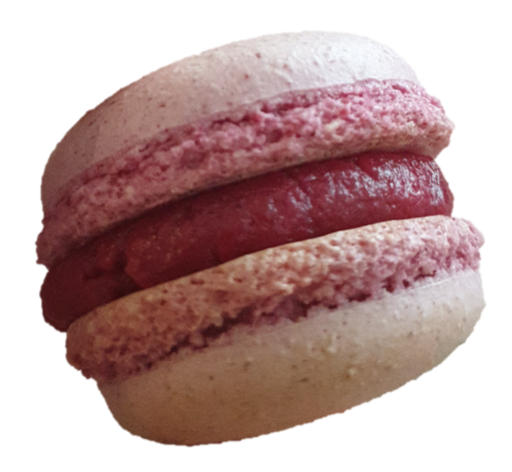
- A 2019 favorite, the raspberry macaron, can be complemented with a powdered raspberry macaron shell. I enhance the speckled red with additional red food coloring. Find the recipe here.






